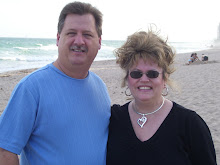EDUC 6712 :
Supporting Information Literacy and Online Inquiry in the Classroom
“In constructivist classrooms, teachers encourage students to make their own discoveries rather than always relying on the teacher to tell them what to think” (Eagleton & Dobler, 2007, p. 9). I believe this is the revelation that makes a huge difference in a student’s personal learning environment and can help to make smooth transitions to becoming life-long learners as we progress into the 21st Century. In the beginning of this course, the determination of how to impart the skills from the "21st Century Fluencies Quotient Insta-Audit" (Jukes, 2007) allowed me to have a launching point to see areas where many of my students struggle with learning as active participants. Having this information and using it productively will provide me with future teaching opportunities to engage each of my students in activities for sorting through the huge amounts of information they experience daily with the Internet, while as Dr. David Warlick states, “they learn to teach themselves to do what they need to do to use the contemporary tools available to them” (Laureate Education, Inc., 2009).
The survey activity at the beginning of the course also permitted me to initiate a plan to aid students to develop, enhance, and adapt their Web literacy skills with plans such as “QUEST"(Questioning, Understanding Resources, Evaluating, Synthesizing, and Transforming), explained by Eagleton and Dobler (2007) as being a guide to engage students in internet inquiry.
Nowadays, students must know and understand that their success depends greatly on "behaving in a responsible manner without supervision"(Laureate Education, Inc., 2009). The information I have gathered from this course will be used to ensure that every one of my students independently combines old literacy experiences with new literacy skills to help them read with purpose, select materials of interest and use those materials to learn, and make the distinction for fact from opinion when using technology resources. Incorporating the use of Web logs (blogs), Wikis, World Wide Web browsers, e-mail, virtual worlds, and other information sources used by students will help students to use information skills. As stated by Richardson (2002), “The Future Is Here…considering they barely existed just five years ago, online networks have quickly changed the landscape in terms of how we connect with others”.
One professional development goal that I have is “Being better prepared when lesson plans go awry” (Eagleton and Dobler, 2007. Incorporating the “new literacy strategies: questioning, searching, evaluating, synthesizing, and communicating” (Laureate Education, Inc., 2009), will better able me to anticipate how to help students as they engage in skills from the "21st Century Fluencies List” (Jukes, 2007) for success. Exploring professional educational sites and keeping up to date with resources that provide support and information on the new literacies will be a priority. Professionally modeling of these skills and providing my students with exposure will demonstrate to them how “the shift to Web 2.0 is not simply the development of new ways of doing things, as in an upgrade. Rather it’s an entirely new worldview” (Knobel & Wilber, 2009, p. 21) for substance they will require for their futures.
Eagleton, M. B., & Dobler, E. (2007). Reading the Web: Strategies for Internet inquiry. New York: The Guilford Press.
Jukes, Ian. (2007). 21st Century Fluencies Quotient Insta-Audit and the Info Savvy Group. Retrieved: September 7, 2009, from http://www.committedsardine.com/handouts/tfcfia.pdf.
Knobel, M., & Wilber, D. (2009, March). Let's talk 2.0. Educational Leadership, 66(6), 20–24.
Laureate Education, Inc. (Executive Producer). (2009). Program one. Skills for the Future. [Motion picture]. Supporting Information Literacy and Online Inquiry in the Classroom. Baltimore: Author.
Richardson, W. (2009, March). Becoming network-wise. Educational Leadership, 66(6), 26–31.
Wednesday, October 28, 2009
Subscribe to:
Posts (Atom)





